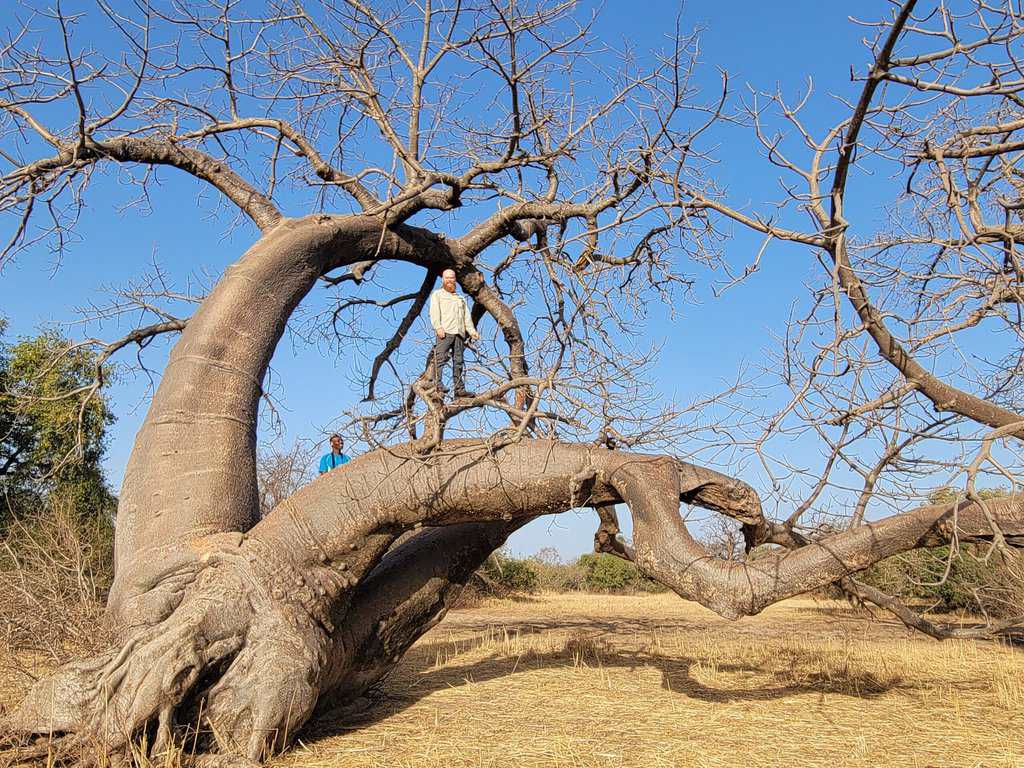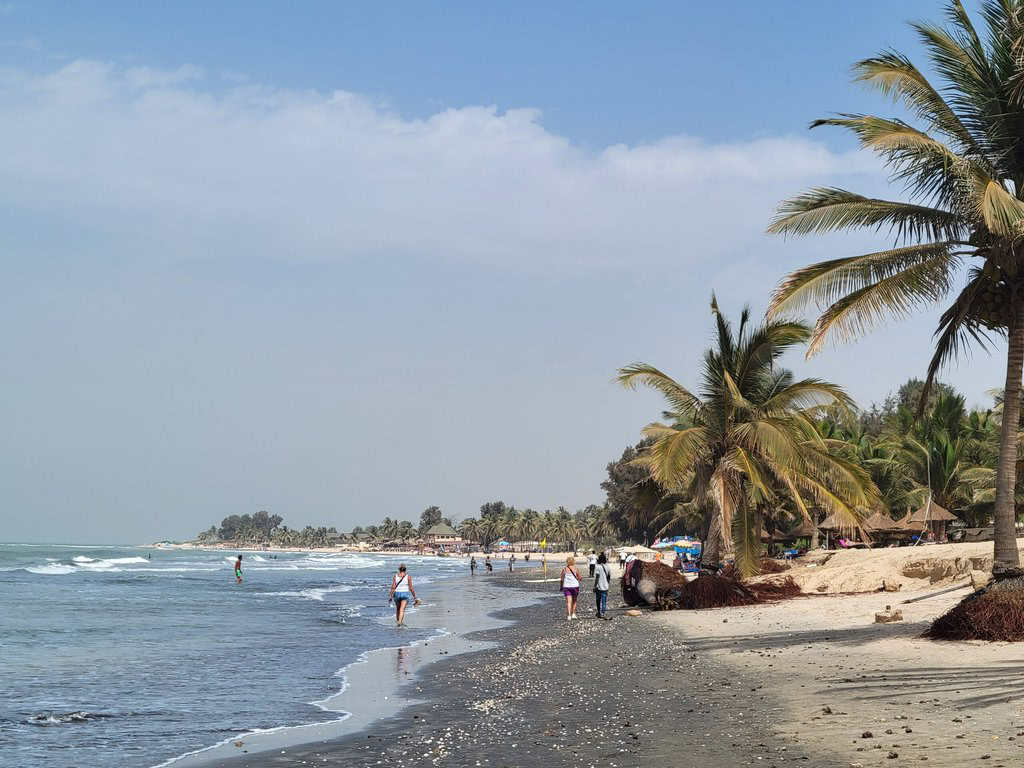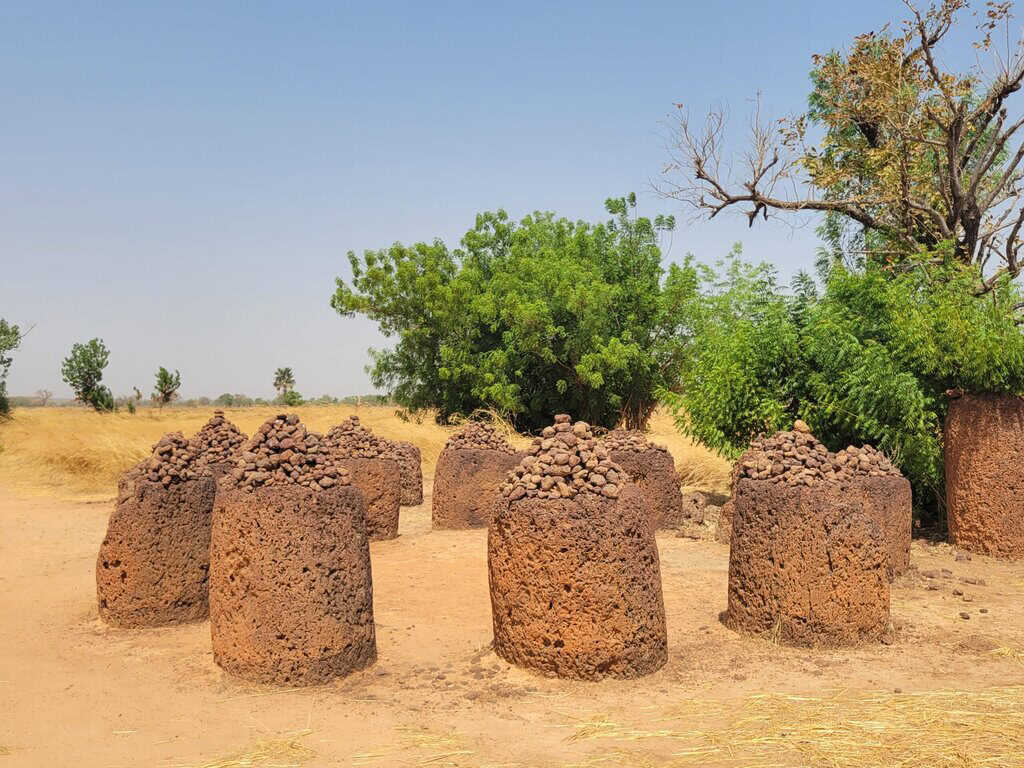Curious about travelling in The Gambia? Or uncovering its remote villages and raw beauty? The Gambia – Discovering the Country is our personal experience exploring this country in 2024. Our adventure includes The Gambia River National Park and Banjul. We share our insights on where to stay, where to eat and drink, and things to see and do. The Gambia – Discovering the Country reflects our travel style and aims to provide useful things to know before visiting this obscure destination.
The Gambia, ‘the smiling coast of Africa’. This is more than appropriate. It may be Africa’s smallest mainland country, but it’s the largest in terms of friendly and smiling people. Completely surrounded by Senegal, it would be easy for The Gambia to lose its identity, but the people are proud, their traditions unique, and their history rich. Named after the river Gambia, which flows the entire length of the country, The Gambia is a welcoming and appealing country to visit no matter what your interests.
Why go to The Gambia?
Peanuts, beaches and birds are abundant. Banjul and the Atlantic coast are a popular destination for beach lovers from Europe, but venture up river, and you’ll discover National Parks that monkeys, chimps, hippos and over six hundred species of bird call home. The Gambia is Africa for beginners. With English as the official language and plenty of restaurants and bars, it’s easy to feel comfortable. The public transport system is good and provides access to most of the country. The Gambia is a destination that allows you to have the best of both worlds, head inland and explore, or sit back and relax on the coast. Whatever you decide, The Gambia won’t disappoint.
- Capital: Banjul
- Best time to visit: October – April (wet season is June to September)
- Budget/Mid-Range/Couple: AU$130 per day
- Currency: Dalasi (D40 = AU$1)
- Language: English
- Visa: No
- Difficulty: 1 (1-basic & 5-challenging)

The Gambia River National Park
Baboon Island forms the main focus point of the park. The island contains The Gambia’s only chimpanzee population. It is also home to red colobus and green velvet monkeys, hippos, crocodiles and many other species you won’t see anywhere else in the country. The birdlife here is amazing. The park has international projects that are well worth supporting, such as the Chimpanzee Rehabilitation Project, and the The Communities for Red Colobus Project. The park is surrounded by local communities who welcome you with friendly smiles and waves. Donkeys and goats wander freely on the dusty red roads, woman wash clothes in the river, while children swim and play, and men work at the local peanut factory. It really is a beautiful place to spend time.
Getting to The Gambia River National Park
Wassu is the closest town to the park. It’s a five-hour drive from Banjul. Once you reach Wassu, follow the signs to Kairoh, a small village on the river, where you will find the boats, which are the only way to access the National Park. Tours can be arranged by local accommodation, or you can pre book a package from Banjul. Omar is a local guide who can arrange most trips in The Gambia [email protected]. It is also possible to head down to the river at Kairoh, where the boats depart from, and arrange your own guide and boat. “Smiley” is a great local guide [email protected] who is based in the area.
Where to stay in The Gambia River National Park
Very limited places to stay in the area. The most popular option is Kairoh Guesthouse. Basic but comfortable, right on the river (Double room with bathroom D1450/AU$33 per night). The staff are great, there’s a restaurant, and many different tour options. Alasana the manager is very helpful whatsapp+2203232643.
Where to eat and drink in The Gambia River National Park
We enjoyed the meals at Kairoh Guesthouse, they were really accommodating and happy to make local style vegetable dishes, including Domoda, a peanut stew served with onion, carrot, cabbage, eggplant and rice. Stroll around the local villages, Kairoh and Wassu, to find peanuts, pankets and a couple of seasonal fruits. We also enjoyed taking a bottle of wine to drink by the river under the shade of a tree.
- Get to Kairoh Guesthouse (local style fish or vegetable dishes with rice, mains D400-600, breakfast includes local honey and peanut butter)
- Don’t miss Wassu (look for the ladies selling fruit and pankets by the roadside, or baguettes filled with lentils)
Things to see and do in The Gambia River National Park
Baboon Island Take a two hour boat tour around Baboon Island looking for wildlife. D1500/AU$34 for a boat, up to four people, plus a D500/AU$11 park fee.
Wassu Stone Circles An Archaeological site just five minutes from Wassu. Follow the sign down the bumpy road. D100/AU$2 entry including guide. Small but interesting ancient site, the stone henge of Gambia.
Nature Walks Head across the river and wander around in the forest looking for wildlife. You can go on your own or pick up a guide at the Kairoh Guesthouse. Go early morning or evening for best results. Smiley is a great guide if available. We enjoyed the Boabab Tree Forest Walk (D400/AU$9). The trees are wonderful, and we saw meercats, warthogs and plenty of birds.
Getting around The Gambia River National Park
Once you are up the river, a boat is the best way to get around. All other excursions are on foot. From the Kairoh Guesthouse, you can walk into Wassu, or get a lift on a donkey cart with one of the locals.

Banjul
Banjul is the capital, and the major hive of activity. Along the Atlantic coast is where you’ll find the foreign visitors, enjoying the sun and the all-inclusive resorts. But within easy reach are nature parks, mangroves, and beating local markets. You will more than likely be stopped by locals and asked where you are from, and what you think about The Gambia. Be polite, ask them where they are from. They’re not scary or dangerous, they’re curious and welcoming, and they appreciate your time for a chat.
Getting to Banjul
With direct flights to the UK and Europe, it’s no problem getting to Banjul. Additionally, the capital is well connected with good roads into neighboring Senegal.
Where to stay in Banjul
The Atlantic coast is full of resorts and hotels, the only problem you will have here is which one to choose. If you prefer to stay a bit away from the tourist area, the Serekunda area is a great spot. We found a lovely Airbnb apartment, owned by a local guy. It’s a perfect location if you still want to be close enough to the beach, but also stay in an area with locals and not tourists. Serekunda has fruit and vegetable markets, supermarkets, and restaurants.
Where to eat and drink in Banjul
There is a great variety of cafes, restaurants and bars to suit everyone’s style. Easy to find some vegan/vegetarian options too. Local fruit and vegetable markets are everywhere, with a wonderful variety, and make self-catering easy. There are plenty of small supermarkets and pharmacy’s around too, with some familiar brands, but quality, variety and prices vary. Some nice local places to eat around the Serekunda area, and the local people and local ambience was really nice. Senegambia Road leads to Senegambia Beach, and is set up for tourists, but it will limit your experience by only staying here.
- Check out the restaurant at Bojang River Lodge (shaded outdoor seating, large vegetable curry D450/AU$10, a beautiful quiet beach to walk on too)
- Get to Kaddijatou’s Restaurant (a local style restaurant serving delicious authentic dishes)
- Don’t miss Solomons bar/restaurant (it spills out onto the beach, it’s where everyone meets)
Things to see and do in Banjul
Abuko Nature Reserve A large reserve with lots of walking tracks. There are plenty of monkeys and birds, and a wetland area with crocodiles. Twenty minutes from Serekunda (D300/AU$7 entry)
Bijilo Monkey Park A large park with loads of monkeys that you can walk closely too, and feed peanuts if you desire. Alternatively, bring your own sliced bananas for the monkeys. Guides are available, but not necessary. Gets very busy. Short walk from Senegambia area (D150/AU$3.50 entry)
Serekunda Market The best place for fruit and vegetables, and everything else imaginable. It’s where the locals shop. Very busy, allow time, be patient. It can get squishy, and there is plenty of hissing to get your attention. Take a taxi and walk the last couple of blocks.
Getting around Banjul
Local taxis are your best way to get anywhere that’s out of walking distance (D500/AU$12 will get you to most places).

Getting to The Gambia
With direct flights from the UK, Europe, Turkey and other African cities, reaching The Gambia poses no problems. Also well connected by road to neighboring Senegal.
Banjul is the finish line for the Dakar Challenge, an adventurous road trip that also takes you through Western Sahara, Mauritania and Senegal.
Useful things to know before visiting The Gambia
Most visitors do not need a visa.
If you are venturing into Senegal, there’s a Senegalese embassy that’s easy to reach and will have your visa ready in 24 hours (D450/AU$10. Bring 1x copy of passport, 1x passport photo).
There are peanuts everywhere.
Euro’s, Pounds and $US are the best currency to bring. Forget about paying by card, it’s a cash is king country.
Bring plenty of sunscreen. It’s hard to find good quality brands and expensive to buy.
People are very friendly. It’s a safe country. Our experience was that allowing time for some genuine friendly banter was always appreciated.
Hustlers can get a little persistent, especially in tourist areas. Be confident and respectful. Just let them know you’re ok at the moment.
There are no public toilets. Toilets are in most bars, cafes and restaurants, and at some tourist attractions (such as the ones we have mentioned in things to see and do).
Final thoughts on travelling in The Gambia
The Gambia is a warm and welcoming destination. The people make this country so special. The Atlantic coast is great for a couple of days, but the real Gambia lies beyond the beaches and resorts. It can be found in the markets, along the streets, up the river and inland. This is where you will find the genuine Gambian people, with their broad smiles, going about their day. Listen to their stories, have a conservation, make some new friends. Travelling isn’t only about the sights, it’s also about understanding what shapes a country and what drives it, it’s people. The Gambia is its people.
